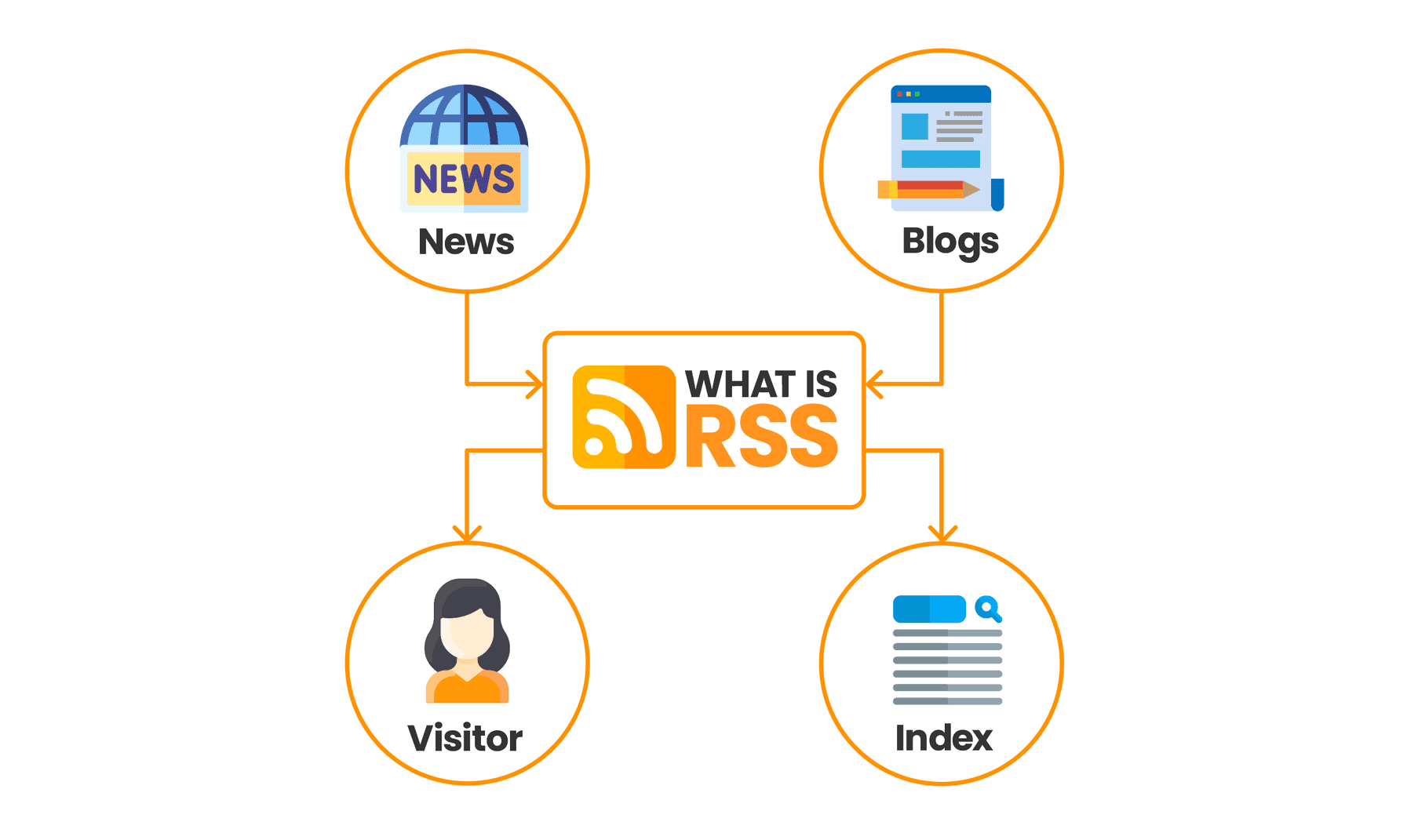What is RSS? (Really Simple Syndication)

- RSS is a way to get the latest content from your favorite websites directly to you.
- You can use RSS to subscribe to news sites, blogs, and podcasts.
- You can also use it to automatically post content to your social media accounts.
- To get started with RSS, you need an RSS reader.
- Once you have an RSS reader, you can subscribe to your favorite websites.
- When a website releases new content, it will go directly to your RSS reader.
import yaml
import xml.etree.ElementTree as xml_tree
# 1. Read YAML data
with open('feed.yaml', 'r') as file:
yaml_data = yaml.safe_load(file)
# 2. Create the root RSS element
rss_element = xml_tree.Element('rss', {
'version': '2.0',
'xmlns:itunes': 'http://www.itunes.com/dtds/podcast-1.0.dtd',
'xmlns:content': 'http://purl.org/rss/1.0/modules/content/'
})
# 3. Create the channel element
channel_element = xml_tree.SubElement(rss_element, 'channel')
# 4. Add the title from YAML data
xml_tree.SubElement(channel_element, 'title').text = yaml_data['title']
# 5. Create an ElementTree object and write to XML file
output_tree = xml_tree.ElementTree(rss_element)
output_tree.write('podcast.xml', encoding='UTF-8', xml_declaration=True)
This Python code reads data from a YAML file (feed.yaml), processes it, and generates an RSS 2.0 XML file (podcast.xml).
Explanation
-
Import Libraries:
yaml: Used for parsing YAML files.xml.etree.ElementTree: A built-in Python library for working with XML data.
-
Read YAML Data:
- The
with open(...)block opens thefeed.yamlfile in read mode ('r'). yaml.safe_load(file)reads the YAML content and parses it into a Python dictionary (yaml_data).safe_loadis preferred overloadfor security reasons, preventing arbitrary code execution from malicious YAML.
- The
-
Create RSS Element:
xml_tree.Element('rss', ...)creates the root<rss>element.- The dictionary provides attributes for the element:
version,xmlns:itunes(namespace for iTunes podcast metadata), andxmlns:content(namespace for content:encoded).
-
Create Channel Element:
xml_tree.SubElement(rss_element, 'channel')adds a<channel>element as a child of the<rss>element.
-
Add Title from YAML:
xml_tree.SubElement(channel_element, 'title')creates a<title>element inside the<channel>..text = yaml_data['title']sets the text content of the<title>element to the value of the'title'key from theyaml_datadictionary. This assumes yourfeed.yamlfile has atitlekey.
-
Create ElementTree and Write to XML:
output_tree = xml_tree.ElementTree(rss_element)creates anElementTreeobject from the root<rss>element.output_tree.write('podcast.xml', encoding='UTF-8', xml_declaration=True)writes the XML data topodcast.xml.encoding='UTF-8'specifies the character encoding.xml_declaration=Trueadds the XML declaration (<?xml version="1.0" encoding="UTF-8"?>) at the beginning of the file.